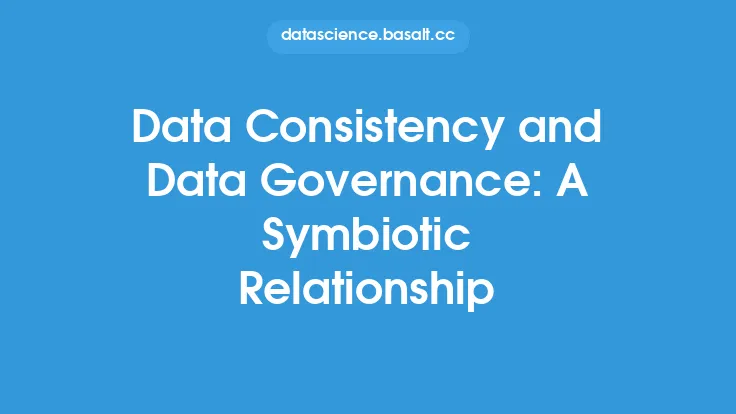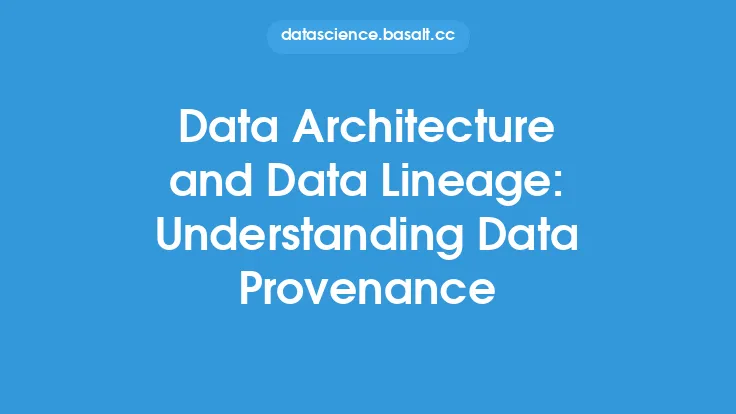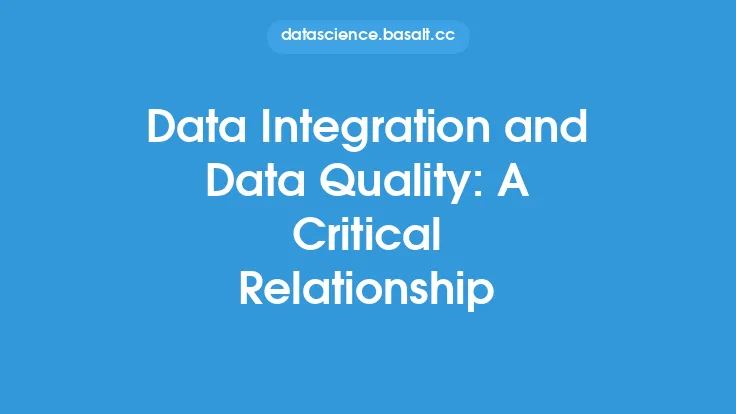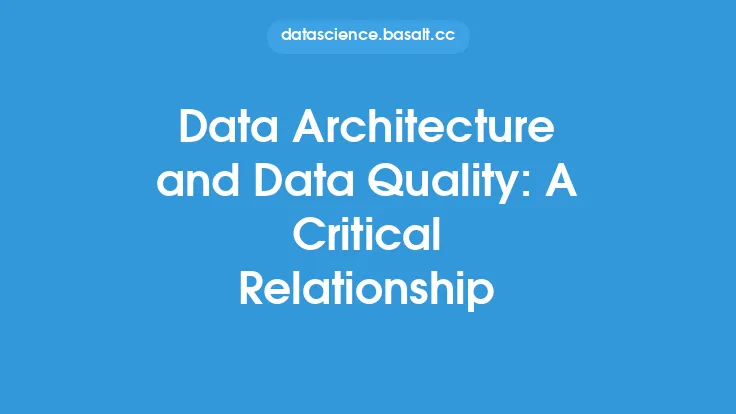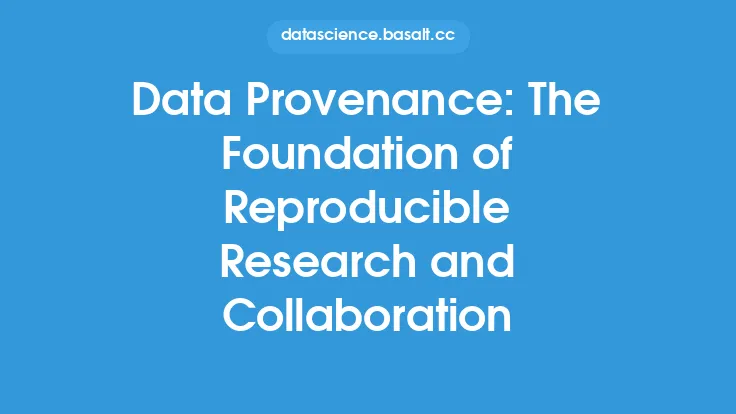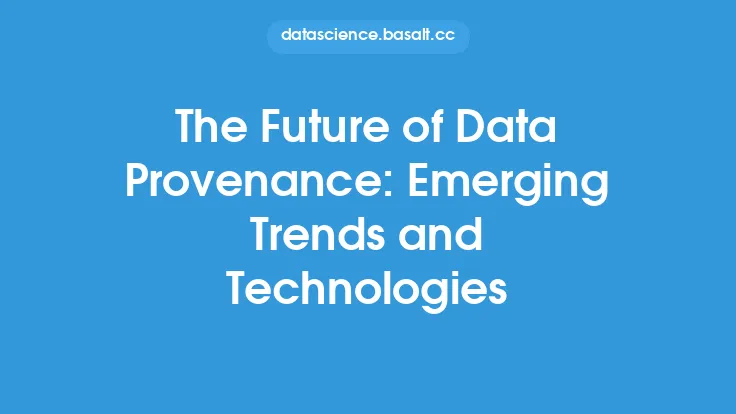Data provenance and data governance are two interconnected concepts that play a crucial role in ensuring the quality, reliability, and integrity of data within an organization. Data provenance refers to the process of tracking the origin, evolution, and movement of data throughout its lifecycle, while data governance encompasses the policies, procedures, and standards that govern the management and use of data. In this article, we will delve into the symbiotic relationship between data provenance and data governance, exploring how they complement each other to provide a robust framework for data management.
Introduction to Data Provenance
Data provenance is the process of capturing, storing, and managing metadata that describes the history and context of data. This metadata can include information such as the source of the data, the methods used to collect and process it, and any transformations or modifications that have been made to it. By tracking the provenance of data, organizations can ensure that they have a clear understanding of the data's origins, quality, and reliability, which is essential for making informed decisions and ensuring regulatory compliance.
Data Governance: A Framework for Data Management
Data governance is a comprehensive framework that outlines the policies, procedures, and standards for managing and using data within an organization. It encompasses a range of activities, including data quality management, data security, data privacy, and data compliance. Effective data governance ensures that data is accurate, complete, and consistent, and that it is used in a way that is consistent with organizational policies and regulatory requirements. Data governance also provides a framework for ensuring that data is properly documented, stored, and retained, which is critical for maintaining data provenance.
The Symbiotic Relationship Between Data Provenance and Data Governance
Data provenance and data governance are interconnected concepts that rely on each other to provide a robust framework for data management. Data provenance provides the metadata that is necessary for data governance, while data governance provides the policies and procedures that ensure data provenance is properly captured and managed. By integrating data provenance and data governance, organizations can ensure that they have a complete and accurate understanding of their data, which is essential for making informed decisions and ensuring regulatory compliance.
Technical Implementation of Data Provenance and Data Governance
Implementing data provenance and data governance requires a range of technical and organizational measures. From a technical perspective, organizations can use data provenance tools and technologies, such as data lineage tools and data catalogs, to capture and manage metadata. These tools can provide a detailed record of the data's history and context, including information about the source of the data, the methods used to collect and process it, and any transformations or modifications that have been made to it. From an organizational perspective, organizations can establish data governance policies and procedures that outline the roles and responsibilities of data stakeholders, including data owners, data stewards, and data users.
Benefits of Integrating Data Provenance and Data Governance
Integrating data provenance and data governance provides a range of benefits, including improved data quality, increased transparency, and enhanced regulatory compliance. By tracking the provenance of data, organizations can ensure that they have a clear understanding of the data's origins, quality, and reliability, which is essential for making informed decisions. Data governance provides a framework for ensuring that data is properly documented, stored, and retained, which is critical for maintaining data provenance. Additionally, integrating data provenance and data governance can help organizations to identify and mitigate data-related risks, such as data breaches and data loss.
Best Practices for Implementing Data Provenance and Data Governance
Implementing data provenance and data governance requires a range of best practices, including establishing clear policies and procedures, defining roles and responsibilities, and providing training and education to data stakeholders. Organizations should also establish a data governance framework that outlines the policies, procedures, and standards for managing and using data. Additionally, organizations should use data provenance tools and technologies to capture and manage metadata, and establish a data catalog that provides a centralized repository of metadata.
Challenges and Limitations of Implementing Data Provenance and Data Governance
Implementing data provenance and data governance can be challenging, particularly in large and complex organizations. One of the main challenges is establishing a clear understanding of the data's origins, quality, and reliability, which requires a range of technical and organizational measures. Additionally, implementing data governance policies and procedures can be time-consuming and resource-intensive, particularly in organizations with limited resources. Furthermore, ensuring regulatory compliance can be challenging, particularly in organizations that operate in multiple jurisdictions.
Conclusion
In conclusion, data provenance and data governance are two interconnected concepts that play a crucial role in ensuring the quality, reliability, and integrity of data within an organization. By integrating data provenance and data governance, organizations can ensure that they have a complete and accurate understanding of their data, which is essential for making informed decisions and ensuring regulatory compliance. While implementing data provenance and data governance can be challenging, the benefits of improved data quality, increased transparency, and enhanced regulatory compliance make it a critical investment for organizations that rely on data to drive their operations.
